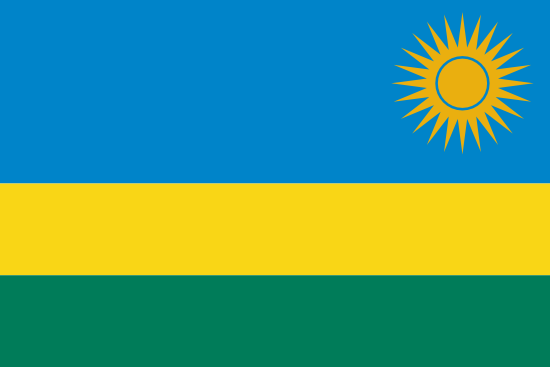At a glance
CDC works with partners in Rwanda to build sustainable public health capacity, strengthen laboratory systems and surveillance networks, deliver high-quality HIV and TB diagnostic, treatment, and prevention services, and respond swiftly to disease outbreaks at their source, preventing health threats from reaching the U.S.

Strategic focus
Since 2002, the U.S. Centers for Disease Control and Prevention (CDC) has supported the Ministry of Health (MOH) in Rwanda in strengthening its capacity to prevent, detect, and respond to diseases and public health threats. CDC builds sustainable HIV and tuberculosis (TB) responses by improving case finding and treatment, enhancing workforce capacity, and strengthening laboratory infrastructure, surveillance, and health information systems.
Read more about CDC's most recent key activities and accomplishments below.
Building public health capacity
- Trained 77 Field Epidemiology Training Program (FETP) Advanced graduates and 346 FETP Frontline graduates in 2024. Over 80 percent of graduates have been integrated into government institutions where they have led responses to more than 80 outbreaks, authored over 50 scientific publications, and informed public health guidelines and decision-making processes in Rwanda.
- Supported the use of electronic health information systems to collect, analyze, and disseminate data for HIV prevention, care and treatment decisions, and reporting purposes.
- Provided patient-level data on newly identified individuals with HIV infection and treatment outcomes in health facilities supported by the U.S. President’s Emergency Plan for AIDS Relief (PEPFAR) through the existing case-based surveillance system.
- Updated bio-behavioral surveillance surveys and population size estimation data for populations at greater risk for HIV and modeled national HIV estimates every 2 to 3 years with partners.
Strengthening laboratory systems and networks
- Supported the rapid deployment of viral load (VL) testing hubs to swifty detect Marburg virus disease (MVD) during the country’s 2024 outbreak. Notably, 73 percent of PEPFAR-supported sites provided essential infrastructure, systems, and operational services in support of the MVD outbreak response.
- Connected the VL, recency, early infant diagnosis, CD4, and hepatitis testing networks to service delivery sites with the Laboratory Information Systems (LIS) and supported ISO accreditation of laboratories.
- Supported laboratories to achieve quality management system certification. This included efforts to reduce turnaround times of HIV test results through continuous quality improvement, rollout and use of LIS by healthcare providers, improved site-level laboratory-clinical interface, and optimization of specimen referral system and laboratory testing network capacity.
HIV prevention and treatment
- Provided technical expertise to MOH for the integration of HIV services within the healthcare system and the management of advanced HIV disease among people living with HIV (PLHIV).
- Maintained the quality and sustainability of antiretroviral therapy (ART) services by supporting the “Treat All” strategy and differentiated service delivery models. This included monitoring to identify challenges and informing strategic program planning.
- Scaled-up national index testing to enhance HIV case finding and initiated a social network strategy aimed at reaching, testing, and people at greater risk for HIV to treatment.
- Started 5,112 individuals on pre-exposure prophylaxis (PrEP), including people at greater risk for HIV.
- Initiated 4,259 new clients with HIV infection on ART in FY2024. Among the 130,238 PLHIV who are currently receiving ART, only 0.2 percent have experienced treatment interruption, and the VL suppression is 98 percent.
- Supported Rwanda’s effort to eliminate mother-to-child transmission of HIV. In 2024, the HIV prevalence among all women in prenatal care was 1.79 percent. The MOH national HIV report and 2023 national data indicate that 99 percent of HIV-exposed infants were HIV-negative at 24 months.
Tuberculosis prevention and treatment
- Routinely screened PLHIV for TB and provided treatment for those diagnosed. People without TB received TB preventive treatment (TPT) to reduce their chance of developing TB.
- Scaled up TPT services to all 192 CDC-supported HIV care and treatment health facilities.
By the numbers
HIV
Estimated HIV Prevalence (Ages 15-49)
2.2% (2023)
Estimated HIV Deaths (Age ≥15)
2,400 (2023)
Reported Number Receiving Antiretroviral Therapy (ART) (Age ≥15)
216,294 (2023)
TB
Estimated TB Incidence
55/100,000 population (2023)
Reported Percent of People with TB and HIV
12% (2023)
TB Treatment Success Rate
89% (2022)